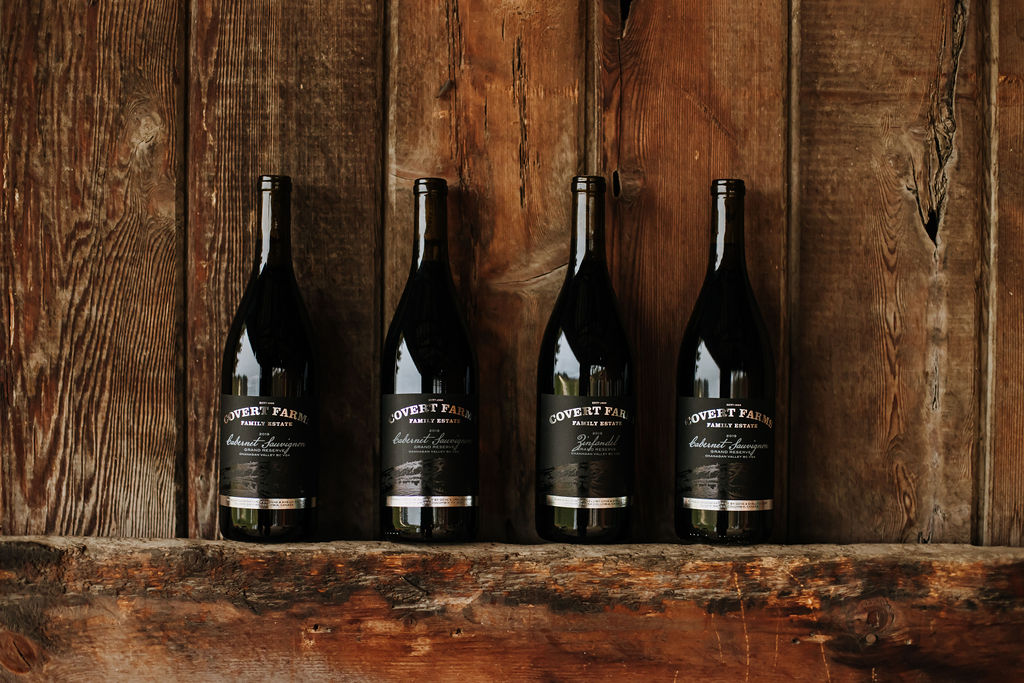COVERT FARMS SPRING 2020 CROP REPORT
“Upon this handful of soil our survival depends, husband it and it will grow our food, our fuel and our shelter and surround us with beauty. Abuse it and the soil will collapse and die taking humanity with it.”
– Sanskrit text 1,500 BC
Certified Organic Wines
After 6 seasons of careful implementation, we now have 5 certified organic wines from the 2019 vintage! These include our Sauvignon Blanc / Semillon, Pinot Blanc, Rosé, Sparkling Pinot Noir and Sparkling Zinfandel.
What does certified organic wine mean?
Since 2006 we have had certified organic vineyards, but had not certified the winery and the winemaking process. The delay involves many factors, some of which are the additional time and paperwork that comes with certifying bureaucracies and potential negative effects on the longevity and quality of our wines. So we have been incrementally refining our winemaking to this point, while always analyzing that we are maintaining the best quality attributes of our wines. We arrived at this point over the last couple vintages and decided to take the next step and make it official.
“’Cause if you like it, then you shoulda put a ring on it.”
– Beyoncé
So what are the technical differences between certified organic and non-certified wines?
One of the big differences between organic and non-organic wines is the levels of sulfur dioxide (SO2) in the final wine. For organic wines the maximum is 100 ppm total SO2 (TS02) and for non-organic wines 350 ppm TSO2. What that means for you is that you will have a more pleasant wine experience. Many people are quite sensitive to sulfur and get headaches after as little as one glass: our organic winemaking practices will greatly reduce these sensitivities. On a practical level, at the winery it means that good fruit sorting at the crusher and strict oxygen management thereafter is increasingly important in order to reduce the chances of oxidation. We utilize minimal racking, dry ice or carbon dioxide (C02) in the tank to purge the empty space, and bottle earlier after fermentation ends. The more oxidation that occurs, the more SO2 is required to keep the wine fresh.
Additional differences are the use of organic and non-GMO yeast in fermentation and utilizing organic yeast nutrients if needed. As you may have noticed, it can get pretty technical. If you want to learn all the details, click here to view the organic standards permitted substance list and here to view the Canadian wine standards.
Weather Report
The good news is that we had a relatively mild winter with only a couple of nail-biting cold snaps, so the vineyard looks in great condition going into spring. This graph from Washington State University, just south of us in the Okanagan, shows the actual temperatures in blue and the temperatures at which bud damage will occur. BUD50 is the temperature at which 50% of the buds will be damaged. So long as the blue graph is above the green graph we are ok. To view all of their graphs online, click here.
Furthermore, we cut buds after a January cold snap to determine if we sustained any bud damage in our vineyard. The image below shows primary, secondary and tertiary buds, which are least to most cold hardy, but most to least productive in terms of fruit quantity and quality. The image shows the centre of the buds green and alive. If they have been damaged they would be black.
We are looking forward to another great growing season and hope that we will be able to welcome you all back to the farm very soon!
– Gene Covert


